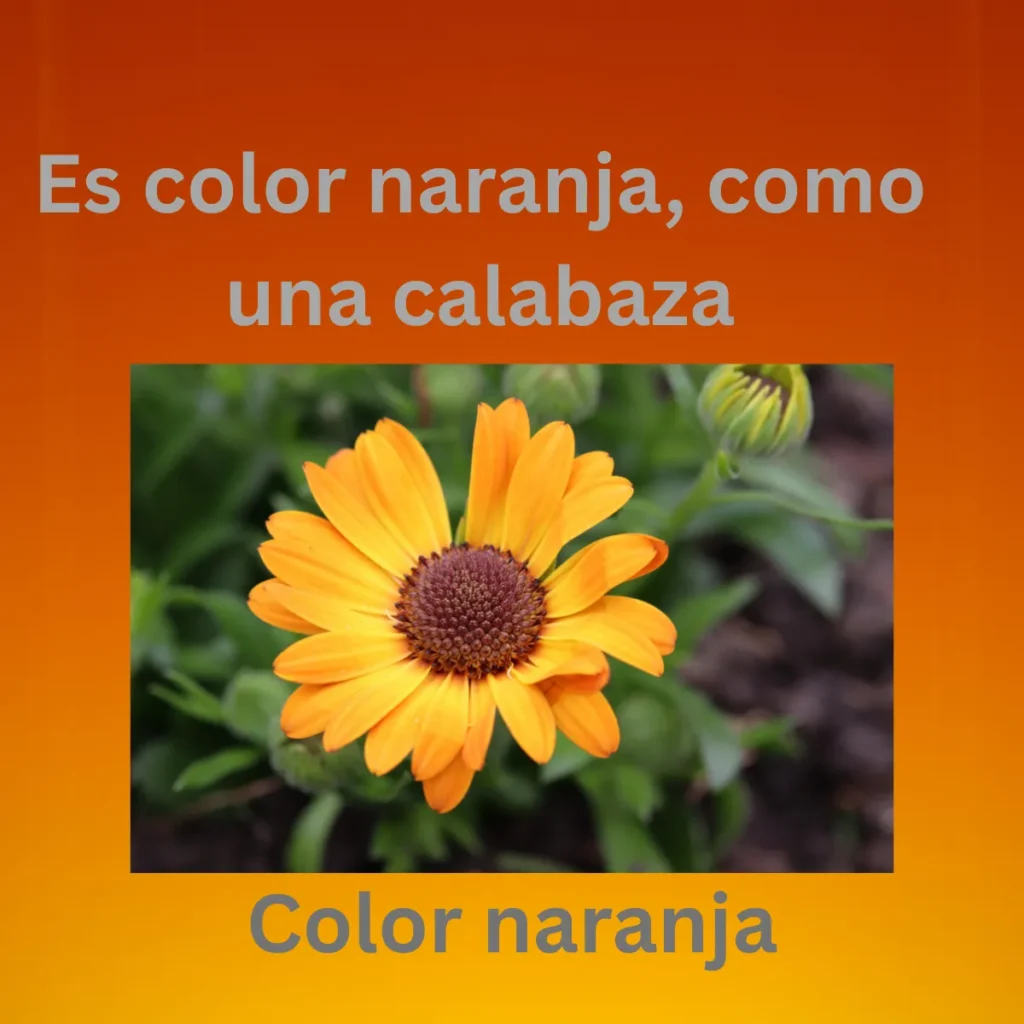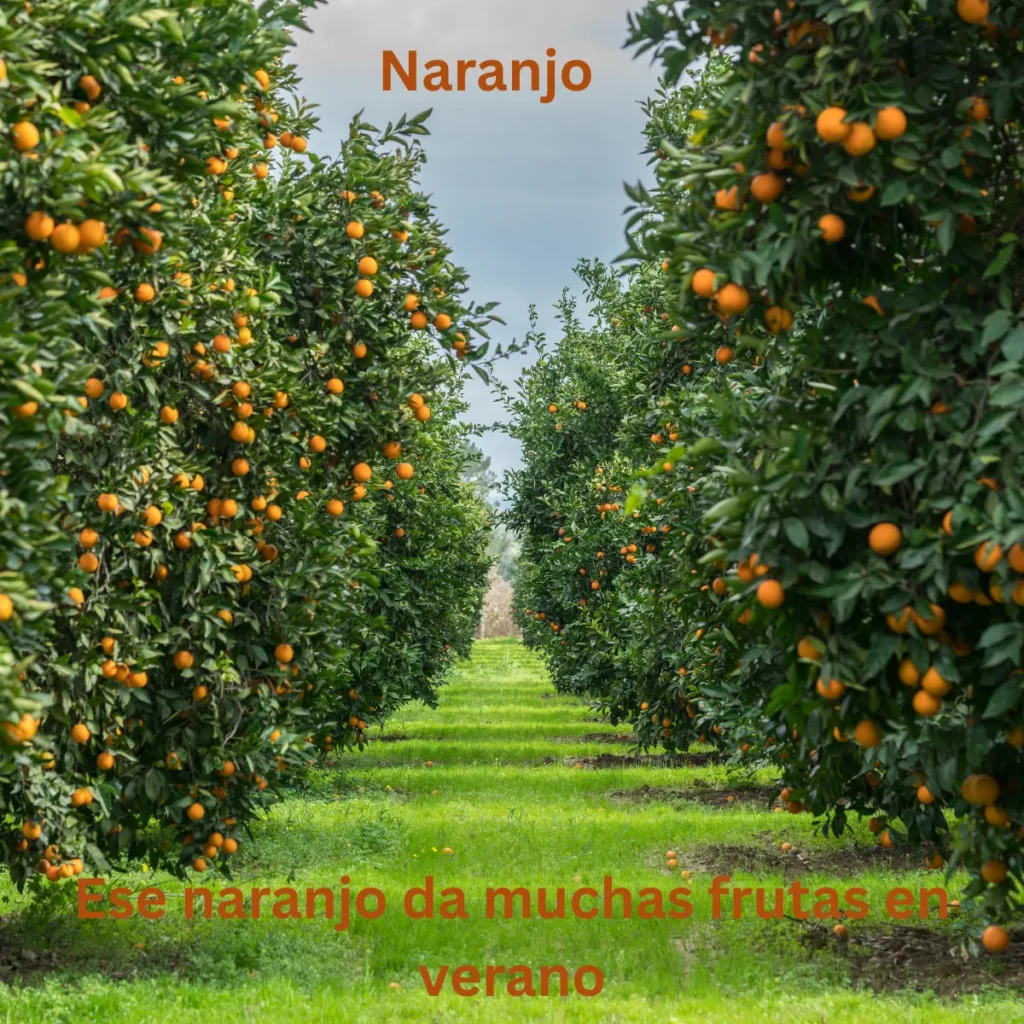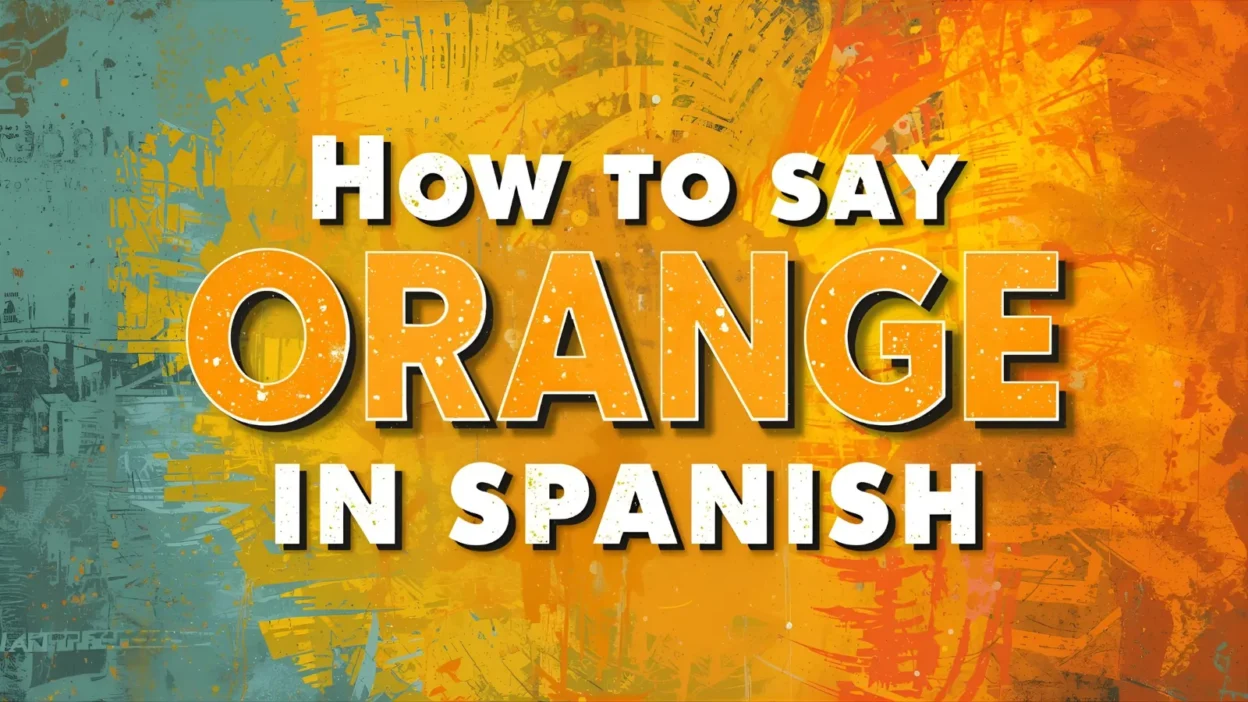How to Say Orange in Spanish is an essential phrase to learn because the word has two common meanings: the fruit and the color. Depending on the context, Spanish speakers use naranja for both, but there are also regional variations you’ll find interesting.
In some places, people may say anaranjado when talking about the color specifically. Learning these variations will help you use the word correctly in any situation.
Say Orange in Spanish
15 Ways to Use “Orange” in Spanish
| No. | Spanish Phrase | Pronunciation | Meaning / Usage |
|---|---|---|---|
| 1 | Naranja | nah-RAHN-hah | Orange (fruit or color, general use) |
| 2 | La naranja | lah nah-RAHN-hah | The orange (fruit) |
| 3 | Una naranja | OO-nah nah-RAHN-hah | An orange (fruit) |
| 4 | El color naranja | el koh-LOR nah-RAHN-hah | The orange color |
| 5 | Anaranjado | ah-nah-rahn-HAH-do | Orange (color, adjective form) |
| 6 | Jugo de naranja | HOO-go de nah-RAHN-hah | Orange juice (common in Latin America) |
| 7 | Zumo de naranja | SOO-mo de nah-RAHN-hah | Orange juice (common in Spain) |
| 8 | Naranja dulce | nah-RAHN-hah DOOL-seh | Sweet orange |
| 9 | Naranja amarga | nah-RAHN-hah ah-MAR-gah | Bitter orange |
| 10 | Naranja sanguina | nah-RAHN-hah sahn-GWEE-nah | Blood orange |
| 11 | Media naranja | MEH-dyah nah-RAHN-hah | “Soulmate” (idiom: my other half) |
| 12 | Naranja mecánica | nah-RAHN-hah meh-KAH-nee-kah | “A Clockwork Orange” (cultural reference) |
| 13 | Color anaranjado | koh-LOR ah-nah-rahn-HAH-do | Orange-colored |
| 14 | Ropa naranja | ROH-pah nah-RAHN-hah | Orange clothes |
| 15 | Flor de azahar de naranja | flor deh ah-SAH-ar de nah-RAHN-hah | Orange blossom (flower of the orange tree) |
This guide breaks it down with real-life dialogues and context to help you use the right word in the right situation, every time.
1. Naranja (Fruit or Color – Standard)
Origin:
From Arabic nāranj, which came from Persian nārang. The word entered Spanish via Muslim rule in Iberia.
Example:
👤 User A: ¿Quieres una naranja?
👤 User B: Sí, gracias. Me encantan las frutas cítricas.
Use: Most common and standard word for both orange the fruit and orange the color in most Spanish-speaking countries.
2. Color naranja (To clarify color)

Origin:
Used when it’s necessary to clarify you’re talking about color, not the fruit.
Example:
👤 User A: ¿De qué color es tu coche?
👤 User B: Es color naranja, como una calabaza.
Use: When color needs to be explicitly stated, especially in formal or descriptive speech.
3. Anaranjado (Describing something orange-ish)
Origin:
A derivative adjective meaning “orange-colored”; used more for objects and art.
Example:
👤 User A: El cielo está anaranjado al atardecer.
👤 User B: ¡Qué hermoso! Parece una pintura.
Use: Common in Latin America to describe hues or tints.
4. Jugo de naranja (Orange juice)

Origin:
Standard term in most of Latin America.
Example:
👤 User A: ¿Qué quieres tomar?
👤 User B: Un jugo de naranja, por favor.
Use: Everyday use in restaurants and homes for ordering juice.
5. Zumo de naranja (Spain – Orange juice)
Origin:
Used in Spain instead of jugo, from Arabic zum (to squeeze).
Example:
👤 User A: ¿Tienes zumo de naranja natural?
👤 User B: Claro, recién exprimido.
Use: European Spanish. “Zumo” instead of “jugo.”
6. Tono naranja (Orange tone or shade)
Origin:
Used in art, fashion, or makeup.
Example:
👤 User A: Me gusta ese tono naranja para la pared.
👤 User B: Combina muy bien con blanco.
Use: Describing aesthetic shades or artistic tones.
7. Mandarina (Tangerine – orange-like fruit)
Origin:
Different fruit but often confused or used interchangeably by learners.
Example:
👤 User A: ¿Es una naranja o una mandarina?
👤 User B: Es mandarina, es más dulce y fácil de pelar.
Use: When referring to smaller, sweeter varieties.
8. Naranjo (Orange tree)

Origin:
Not the fruit—this means the tree that produces oranges.
Example:
👤 User A: Ese naranjo da muchas frutas en verano.
👤 User B: ¡Qué suerte! Me encantan las naranjas frescas.
Use: Botanical or rural settings; don’t confuse with naranja.
9. A la naranja (Orange-flavored or orange-sauce)
Origin:
Culinary term meaning “cooked with orange” (like duck à l’orange).
Example:
👤 User A: ¿Qué es el pollo a la naranja?
👤 User B: Es pollo con salsa dulce de naranja.
Use: In cooking, restaurant menus, or recipes.
10. Naranja mecánica (Cultural reference: “A Clockwork Orange”)
Origin:
Spanish title for the novel and film A Clockwork Orange by Anthony Burgess.
Example:
👤 User A: ¿Has visto “La naranja mecánica”?
👤 User B: Sí, es muy perturbadora pero interesante.
Use: Pop culture and film references.
11. Color durazno-anaranjado (Peachy-orange)
Origin:
Used in fashion and design for pastel shades.
Example:
👤 User A: ¿Qué tono es ese esmalte?
👤 User B: Es durazno-anaranjado, suave pero brillante.
Use: Design, beauty, or decor contexts.
12. Naranjita (Little orange / affectionate form)
Origin:
Diminutive form; used affectionately for people or objects.
Example:
👤 User A: Mira esta naranjita tan linda.
👤 User B: ¡Parece un juguete!
Use: Colloquial, cute nickname or small fruit.
13. Naranja amarga (Bitter orange)
Origin:
Used in culinary and medicinal contexts, especially in Spain and the Caribbean.
Example:
👤 User A: Este dulce es de naranja amarga.
👤 User B: Tiene un sabor fuerte, pero me gusta.
Use: Used in marmalades, desserts, or teas.
14. Ropa color naranja / prendas naranjas (Orange clothes)

Origin:
Fashion-specific phrasing when referring to items of clothing.
Example:
👤 User A: Esa chaqueta color naranja está de moda.
👤 User B: Sí, resalta mucho en otoño.
Use: Fashion and styling conversations.
15. Expresiones con “naranja” (Expressions involving orange)
Origin:
Some idioms use “naranja” metaphorically, though rare.
Example:
👤 User A: ¿Sabes qué es “la media naranja”?
👤 User B: Sí, ¡es tu alma gemela!
Use: “Media naranja” means “soulmate” in Spanish, literally “half orange.”
Conclusion:
Understanding how to say orange in Spanish helps you use the word naturally for both fruit and color. By learning naranja and anaranjado, you’ll sound more accurate, confident, and culturally aware in everyday conversations. These simple distinctions will make your Spanish more precise and expressive. With practice, you’ll be able to choose the right word effortlessly in any context.



